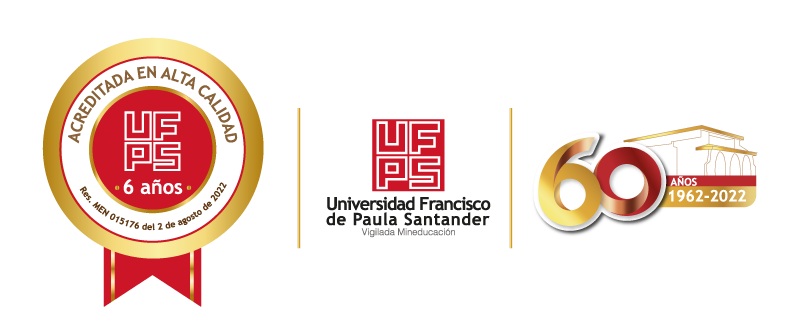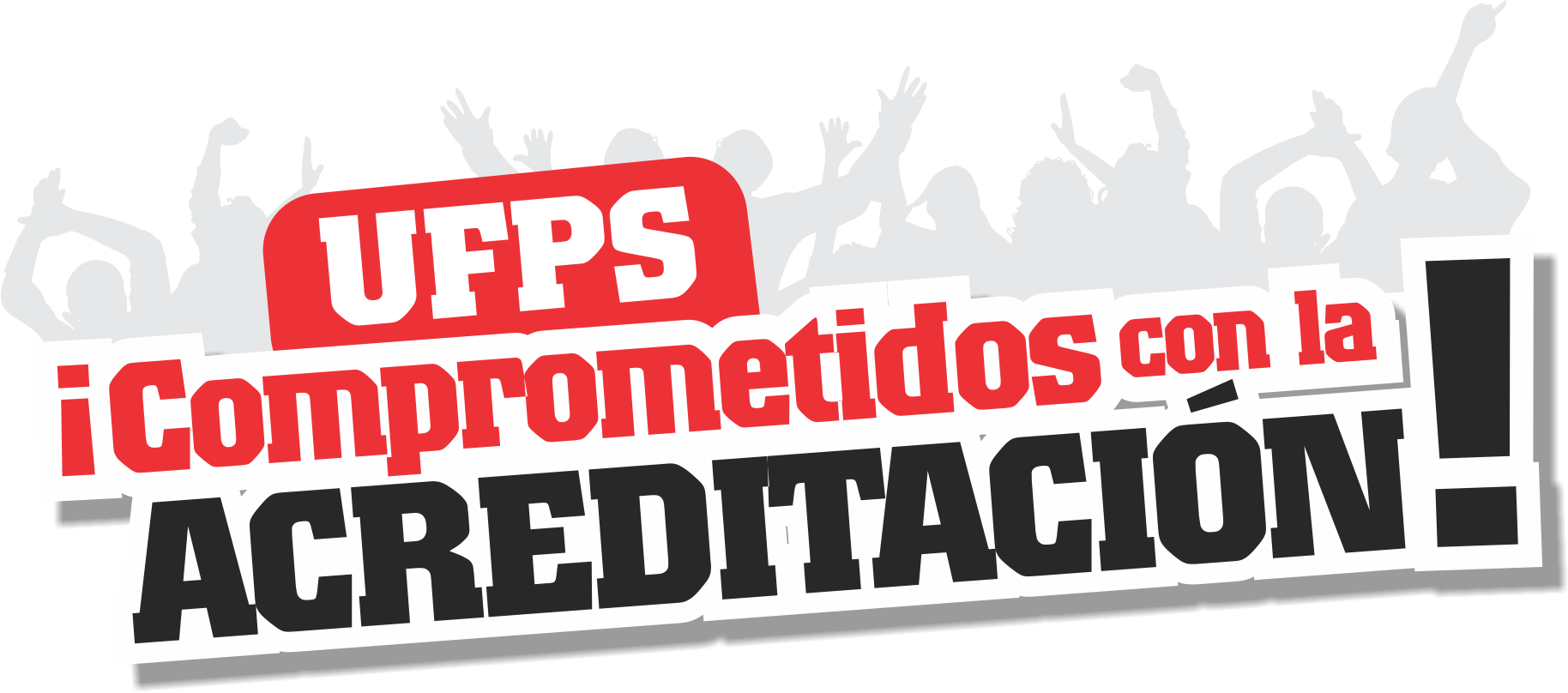Mostrar el registro sencillo del ítem
Aedes aegypti control in breeding sites through an insecticidal coating with dual effect: Laboratory trials and safety assessment
Control de Aedes aegypti en los sitios de cría mediante un recubrimiento insecticida de efecto dual: ensayos de laboratorio y evaluación de la seguridad
| dc.contributor.author | Cardenas, Rocio | |
| dc.contributor.author | Cabrera Quinero, Olga Lucia | |
| dc.contributor.author | Carrillo, Maria Angelica | |
| dc.contributor.author | Pineda, Alejandra | |
| dc.contributor.author | Ahumada, Martha Liliana | |
| dc.contributor.author | Yañez, Yohana | |
| dc.contributor.author | Hanafy M. Ismail | |
| dc.contributor.author | Mark Paine | |
| dc.contributor.author | Rivera Ramirez, Tatiana | |
| dc.contributor.author | Kroeger, Axel | |
| dc.date.accessioned | 2025-03-04T14:38:14Z | |
| dc.date.available | 2025-03-04T14:38:14Z | |
| dc.date.issued | 2024-10-22 | |
| dc.identifier.uri | https://repositorio.ufps.edu.co/handle/ufps/9160 | |
| dc.description.abstract | Ground water tanks are known to be preferred Aedes aegypti oviposition places providing opportunities for adult and larvae control. Therefore, a dual-effect insecticidal coating (IC) (alphacypermethrin/ pyriproxyfen) with a slow-release mechanism and safe for users could be applied within Aedes spp. breeding sites, representing a promising option. Bioassays were designed to determine the mortality and sterilizing effects on gravid mosquitoes exposed to IC. The effect of inhibition of emergence was evaluated in eggs, larvae and pupae exposed in different containers. For the water safety assessment concentrations of active ingredients were determined by reverse phase high performance liquid chromatography (RP-HPLC) and the health risk was calculated. The IC applied to the interior walls of water-holding containers showed efficacy against Ae. aegypti in terms of high gravid-female mortality (81% at 24 h, p < 0.01), sterilizing effect (inhibition of oviposition by 63%, p < 0.01) and emergence inhibition (100% in eggs, L3 and L4; 97% in pupae). The offspring rate was reduced [only 0.15 (38/250) new adults emerged per exposed gravid females as against 11.90 per unexposed female (2976/250) at baseline]. Emergence inhibition was recorded up to 12 months and adult mortality >80% up to 6 months. The use of water stored in treated containers, either for washing or drinking, is not expected to pose a health risk to users. IC applied to domestic water containers has dual and complementary action that reduces Ae. aegypti densities (immature and adult stages). This represents baseline information for a cluster randomized efficacy trial in Colombia. | eng |
| dc.format.extent | 14 Páginas | spa |
| dc.format.mimetype | application/pdf | spa |
| dc.language.iso | eng | spa |
| dc.publisher | Medical and veterinary entomology | spa |
| dc.rights | This is an open access article under the terms of the Creative Commons Attribution-NonCommercial License | eng |
| dc.rights.uri | https://creativecommons.org/licenses/by-nc/4.0/ | spa |
| dc.source | https://pubmed.ncbi.nlm.nih.gov/39543943/ | spa |
| dc.title | Aedes aegypti control in breeding sites through an insecticidal coating with dual effect: Laboratory trials and safety assessment | eng |
| dc.title | Control de Aedes aegypti en los sitios de cría mediante un recubrimiento insecticida de efecto dual: ensayos de laboratorio y evaluación de la seguridad | spa |
| dc.type | Artículo de revista | spa |
| dcterms.references | Alcalá, L., Quintero, J., González-Uribe, C. & Brochero, H. (2015) Productividad de Aedes aegypti (L.) (Diptera: Culicidae) en viviendas y espacios públicos en una ciudad end éndemica para dengue en Colombia [Estimation of Aedes aegypti (L.) (Diptera: Culicidae) productivity in households and public spaces in a dengue endemic city in Colombia]. Biomedica: Revista del Instituto Nacional de Salud, 35(2), 258–268. Available from: https://doi.org/10.1590/S0120-41572015000 200014 | spa |
| dcterms.references | Alim, A., Huda, M.M., Ghosh, D., Halleux, C.M., Almahmud, M., Olliaro, P.L. et al. (2023) Long-term efficacy of insecticidal wall painting for controlling visceral leishmaniasis vectors in Bangladesh. The American Journal of Tropical Medicine and Hygiene, 109(5), 1022–1027. Available from: https://doi.org/10.4269/ajtmh.22-0809 | spa |
| dcterms.references | Banjara, M.R., Das, M.L., Gurung, C.K., Singh, V.K., Joshi, A.B., Matlashewski, G. et al. (2019) Integrating case detection of visceral leishmaniasis and other febrile illness with vector control in the postelimination phase in Nepal. The American Journal of Tropical Medicine and Hygiene, 100(1), 108–114. Available from: https://doi.org/10. 4269/ajtmh.18-0307 | spa |
| dcterms.references | Berti, J., Manzo, D., Ramos, M. & Guerra, L.A. (2013) Eficacia y actividad residual del regulador de crecimiento pyriproxyfen sobre larvas de Aedes aegypti (Diptera: Culicidae) en condiciones de laboratorio. Boletín de Malariología y Salud Ambiental, 53, 56–64. | spa |
| dcterms.references | Bowman, L.R., Donegan, S. & McCall, P.J. (2016) Is dengue vector control deficient in effectiveness or evidence?: Systematic review and meta-analysis. PLoS Neglected Tropical Diseases, 10(3), e0004551. Available from: https://doi.org/10.1371/journal.pntd. 0004551 | spa |
| dcterms.references | Caputo, B., Ienco, A., Cianci, D., Pombi, M., Petrarca, V., Baseggio, A. et al. (2012) The "auto-dissemination" approach: a novel concept to fight Aedes albopictus in urban areas. PLoS Neglected Tropical Diseases, 6(8), e1793. Available from: https://doi.org/10.1371/journal.pntd. 0001793 | spa |
| dcterms.references | Carrillo, M.A., Cardenas, R., Yañez, J., Petzold, M. & Kroeger, A. (2023) Risk of dengue, Zika, and chikungunya transmission in the metropolitan area of Cucuta, Colombia: cross-sectional analysis, baseline for a cluster-randomised controlled trial of a novel vector tool for water containers. BMC Public Health, 23(1), 1000. Available from: https:// doi.org/10.1186/s12889-023-15893-4 | spa |
| dcterms.references | CDC [Centers for Disease Control and Prevention]. (2010) Guideline for evaluating insecticide resistance in vectors using the CDC bottle bioassay [Internet]. Available from: https://www.cdc.gov/malaria/ resources/pdf/fsp/ir_manual/ir_cdc_bioassay_en.pdf [Accessed 27th November, 2016]. | spa |
| dcterms.references | Che-Mendoza, A., Medina-Barreiro, A., Koyoc-Cardeña, E., UcPuc, V., Contreras-Perera, Y., Herrera-Bojórquez, J. et al. (2018) House screening with insecticide-treated netting provides sustained reductions in domestic populations of Aedes aegypti in Merida, Mexico. PLoS Neglected Tropical Diseases, 12(3), e0006283. Available from: https://doi.org/10.1371/ journal.pntd.0006283 | spa |
| dcterms.references | Diéguez Fernández, L., Cabrera Fernández, S.M., Prada Noy, Y., Cruz Pineda, C. & Rodríguez de la Vega, R. (2010) Aedes (St.) aegypti en tanques bajos y sus implicaciones para el control del dengue en Camagüey [Presence of Aedes aegypti in water tanks on the ground and the implications for dengue control in Camagüey province]. Revista Cubana de Medicina Tropical, 62(2), 93–97 | spa |
| dcterms.references | Gómez, L., Rocha, H., Torró, I., Pérez, I., Mendes, D., Silvia, K. et al. (2024) Insecticide paints: a new community strategy for controlling dengue and zika mosquito vectors in Cabo Verde. Frontiers in Tropical Diseases, 5, 1321687. | spa |
| dcterms.references | Gunathilaka, N., Ranathunge, T., Udayanga, L. & Abeyewickreme, W. (2017) Efficacy of blood sources and artificial blood feeding methods in rearing of Aedes aegypti (Diptera: Culicidae) for sterile insect technique and incompatible insect technique approaches in Sri Lanka. BioMed Research International, 2017, 3196924. | spa |
| dcterms.references | Horstick, O., Boyce, R. & Runge-Ranzinger, S. (2018) Building the evidence base for dengue vector control: searching for certainty in an uncertain world. Pathogens and Global Health, 112(8), 395–403. Available from: https://doi.org/10.1080/20477724.2018.1547541 | spa |
| dcterms.references | Huda, M.M., Ghosh, D., Alim, A., Almahmud, M., Olliaro, P.L., Matlashewski, G. et al. (2019) Intervention packages for early visceral leishmaniasis case detection and sandfly control in Bangladesh: a comparative analysis. The American Journal of Tropical Medicine and Hygiene, 100(1), 97–107. Available from: https://doi.org/10.4269/ ajtmh.18-0290 | spa |
| dcterms.references | Hustedt, J.C., Boyce, R., Bradley, J., Hii, J. & Alexander, N. (2020) Use of pyriproxyfen in control of Aedes mosquitoes: a systematic review. PLoS Neglected Tropical Diseases, 14(6), e0008205. Available from: https://doi.org/10.1371/journal.pntd.0008205 | spa |
| dcterms.references | Joint FAO/WHO Meeting on Pesticide Residues JMPR. (1999) Pyriproxyfen. Geneva: World Health Organization. Available from: http:// www.inchem.org/documents/jmpr/jmpmono/v99pr12.html | spa |
| dcterms.references | Joint FAO/WHO Meeting on Pesticide Residues-JMPR. (2006) Cypemethrin (including alpha- and zeta cypermethrin). Pesticide residues in food. Evaluations 2006 Part II Toxicological [Online]. Available from: http://www.inchem.org/documents/jmpr/jmpmono/v2006pr01.pdf | spa |
| dcterms.references | Kroeger, A., Lenhart, A., Ochoa, M., Villegas, E., Levy, M., Alexander, N. et al. (2006) Effective control of dengue vectors with curtains and water container covers treated with insecticide in Mexico and Venezuela: cluster randomised trials. BMJ (Clinical Research Ed.), 332(7552), 1247–1252. Available from: https://doi.org/10.1136/ bmj.332.7552.1247 | spa |
| dcterms.references | Kroeger, A., Villegas, E., Ordoñez-González, J., Pabon, E. & Scorza, J.V. (2003) Prevention of the transmission of Chagas’ disease with pyrethroid-impregnated materials. The American Journal of Tropical Medicine and Hygiene, 68(3), 307–311. | spa |
| dcterms.references | Madgwick, P.G. & Kanitz, R. (2023) Beyond redundant kill: a fundamental explanation of how insecticide mixtures work for resistance management. Pest Management Science, 79(2), 495–506. Available from: https://doi.org/10.1002/ps.7180 | spa |
| dcterms.references | Maloney, K.M., Ancca-Juarez, J., Salazar, R., Borrini-Mayori, K., Niemierko, M., Yukich, J.O. et al. (2013) Comparison of insecticidal paint and deltamethrin against Triatoma infestans (Hemiptera: Reduviidae) feeding and mortality in simulated natural conditions. Journal of Vector Ecology: Journal of the Society for Vector Ecology, 38(1), 6– 11. Available from: https://doi.org/10.1111/j.1948-7134.2013. 12003.x | spa |
| dcterms.references | Mateo, P. (2009) Formación y funcionamiento de microcápsulas poliméricas INESFLY: estudio de microscopía óptica y electrónica. Revista Técnica Sater Para la Pintura y la Industria, 18, 2–13. | spa |
| dcterms.references | Meek, M.E., Boobis, A.R., Crofton, K.M., Heinemeyer, G., Raaij, M.V. & Vickers, C. (2011) Risk assessment of combined exposure to multiple chemicals: a WHO/IPCS framework. Regulatory Toxicology and Pharmacology, 60, 1–14. | spa |
| dcterms.references | Mosqueira, B., Chabi, J., Chandre, F., Akogbeto, M., Hougard, J.M., Carnevale, P. et al. (2013) Proposed use of spatial mortality assessments as part of the pesticide evaluation scheme for vector control. Malaria Journal, 12, 366. Available from: https://doi.org/10.1186/ 1475-2875-12-366 | spa |
| dcterms.references | Mosqueira, B., Duchon, S., Chandre, F., Hougard, J.M., Carnevale, P. & Mas-Coma, S. (2010) Efficacy of an insecticide paint against insecticide-susceptible and resistant mosquitoes – part 1: laboratory evaluation. Malaria Journal, 9, 340. Available from: https://doi.org/ 10.1186/1475-2875-9-340 | spa |
| dcterms.references | Oo, S.Z.M., Thaung, S., Maung, Y.N.M., Aye, K.M., Aung, Z.Z., Thu, H.M. et al. (2018) Effectiveness of a novel long-lasting pyriproxyfen larvicide (SumiLarv®2MR) against Aedes mosquitoes in schools in Yangon, Myanmar. Parasites & Vectors, 11(1), 16. Available from: https://doi. org/10.1186/s13071-017-2603-9 | spa |
| dcterms.references | Paz-Bailey, G., Adams, L.E., Deen, J., Anderson, K.B. & Katzelnick, L.C. (2024) Dengue. Lancet (London, England), 403(10427), 667–682. Available from: https://doi.org/10.1016/ S0140-6736(23)02576-X | spa |
| dcterms.references | Quintero, J., Carrasquilla, G., Suárez, R., González, C. & Olano, V.A. (2009) An ecosystemic approach to evaluating ecological, socioeconomic and group dynamics affecting the prevalence of Aedes aegypti in two Colombian towns. Cadernos De Saude Publica, 25(Suppl 1), S93– S103. Available from: https://doi.org/10.1590/s0102-311x200 9001300009 | spa |
| dcterms.references | Quintero, J., García-Betancourt, T., Caprara, A., Basso, C., Garcia da Rosa, E., Manrique-Saide, P. et al. (2017) Taking innovative vector control interventions in urban Latin America to scale: lessons learnt from multi-country implementation research. Pathogens and Global Health, 111(6), 306–316. Available from: https://doi.org/10.1080/ 20477724.2017.1361563 | spa |
| dcterms.references | Rizzo, N., Gramajo, R., Escobar, M.C., Arana, B., Kroeger, A., ManriqueSaide, P. et al. (2012) Dengue vector management using insecticide treated materials and targeted interventions on productive breedingsites in Guatemala. BMC Public Health, 12, 931. Available from: https://doi.org/10.1186/1471-2458-12-931 | spa |
| dcterms.references | Schiøler, K.L., Alifrangis, M., Kitron, U. & Konradsen, F. (2016) Insecticidal paints: a realistic approach to vector control? PLoS Neglected Tropical Diseases, 10(4), e0004518. Available from: https://doi.org/10.1371/ journal.pntd.0004518 | spa |
| dcterms.references | Suman, D.S., Wang, Y., Bilgrami, A.L. & Gaugler, R. (2013) Ovicidal activity of three insect growth regulators against Aedes and Culex mosquitoes. Acta Tropica, 128(1), 103–109. Available from: https://doi.org/ 10.1016/j.actatropica.2013.06.025 | spa |
| dcterms.references | Technical Data Sheet INESFLY. (2020) Technical data sheet SP CoatingSATIS® by Inesfly Corporation S.L., Paiporta, Spain | spa |
| dcterms.references | Tilak, R., Wankhede, U. & Mukherjee, R. (2022) Novel pyriproxyfen based treatment for Aedes breeding control through a long-lasting formulation: laboratory and field trials in Western Maharashtra, India. Journal of Vector Borne Diseases, 59(3), 293–297. Available from: https://doi. org/10.4103/0972-9062.353253 | spa |
| dcterms.references | Vanlerberghe, V., Villegas, E., Oviedo, M., Baly, A., Lenhart, A., McCall, P.J. et al. (2011) Evaluation of the effectiveness of insecticide treated materials for household level dengue vector control. PLoS Neglected Tropical Diseases, 5(3), e994. Available from: https://doi.org/10. 1371/journal.pntd.0000994 | spa |
| dcterms.references | Wai, K.T., Htun, P.T., Oo, T., Myint, H., Lin, Z., Kroeger, A. et al. (2012) Community-centred eco-bio-social approach to control dengue vectors: an intervention study from Myanmar. Pathogens and Global Health, 106(8), 461–468. Available from: https://doi.org/10.1179/ 2047773212Y.0000000057 | spa |
| dcterms.references | Weaver, S.C., Charlier, C., Vasilakis, N. & Lecuit, M. (2018) Zika, Chikungunya, and other emerging vector-borne viral diseases. Annual Review of Medicine, 69, 395–408. Available from: https://doi.org/10.1146/ annurev-med-050715-105122 | spa |
| dcterms.references | World Health Organization. (1998) Test procedures for insecticide resistance monitoring in malaria vectors, bio-efficacy and persistence of insecticides on treated surfaces. In: Report of the WHO Informal Consultation. Document WHO/CDS/CPC/MAL/1998.12. Geneva: World Health Organization, pp. 1–43. | spa |
| dcterms.references | World Health Organization. (2005) Guidelines for laboratory a World Health Organization. Guidelines for laboratory and field testing of mosquito larvicides. Geneva: World Health Organization | spa |
| dcterms.references | World Health Organization. (2009) Dengue guidelines for diagnosis, treatment, prevention and control, New edition. Geneva: World Health Organization. Available from: https://apps.who.int/iris/handle/ 10665/44188 | spa |
| dcterms.references | World Health Organization. (2012) Handbook for integrated vector management. Available from: https://iris.who.int/bitstream/handle/ 10665/44768/9789241502801_eng.pdf?sequence=1 [Accessed 8th January, 2020]. | spa |
| dcterms.references | World Health Organization. (2018) Generic risk assessment model for insecticides used for larviciding and mollusciciding. Second edition WHO/CDS/NTD/VEM2018.04. Available from: https://www.who. int/whopes/resources/9789241515047/en/. | spa |
| dcterms.references | World Health Organization. (2019) Recommended classification of pesticides by hazard and guidelines to classification. Ginebra: Organización Mundial de la Salud. Available from: http://apps. who.int/iris2359 | spa |
| dcterms.references | World Health Organization. (2022) Standard operating procedure for evaluating the sterilizing properties of pyriproxyfen in adult female mosquitoes in WHO bottle bioassays. Available from: https://www.who. int/publications/i/item/9789240043794 | spa |
| dcterms.references | Wright, E., Carrillo, M.A., Matamoros, D., Sanchez, R.C., Yañez, J., Di Lorenzo, G. et al. (2023) Applicability of the Mexican ovitrap system for Aedes vector surveillance in Colombia. Pathogens and Global Health, 117(6), 554–564. Available from: https://doi.org/10.1080/ 20477724.2022.2146049 | spa |
| dcterms.references | Yadav, K., Dhiman, S., Acharya, B.N., Ghorpade, R.R. & Sukumaran, D. (2019) Pyriproxyfen treated surface exposure exhibits reproductive disruption in dengue vector Aedes aegypti. PLoS Neglected Tropical Diseases, 13(11), e0007842. Available from: https://doi.org/10. 1371/journal.pntd.0007842 | spa |
| dcterms.references | Zeichner, B.C. & Perich, M.J. (1999) Laboratory testing of a lethal ovitrap for Aedes aegypti. Medical and Veterinary Entomology, 13(3), 234–238. Available from: https://doi.org/10.1046/j.1365-2915.1999.00192.x | spa |
| dc.identifier.doi | 10.1111/mve.12776 | |
| dc.publisher.place | Reino Unido | spa |
| dc.relation.citationendpage | 14 | spa |
| dc.relation.citationissue | (2024) | spa |
| dc.relation.citationstartpage | 1 | spa |
| dc.relation.cites | Cárdenas, R., Cabrera, O.L., Carrillo, M.A., Pineda, A., Ahumada, M.L., Yañez, Y. et al. (2024) Aedes aegypti control in breeding sites through an insecticidal coating with dual effect: Laboratory trials and safety assessment. Medical and Veterinary Entomology, 1–14. Available from: https://doi.org/10.1111/mve.12776 | |
| dc.rights.accessrights | info:eu-repo/semantics/openAccess | spa |
| dc.rights.creativecommons | Atribución-NoComercial 4.0 Internacional (CC BY-NC 4.0) | spa |
| dc.subject.proposal | Aedes aegypti | eng |
| dc.subject.proposal | Colombia | spa |
| dc.subject.proposal | Cucuta | spa |
| dc.subject.proposal | Dengue | spa |
| dc.subject.proposal | insecticidal coating | eng |
| dc.subject.proposal | pyriproxyfen | eng |
| dc.subject.proposal | vector control | spa |
| dc.subject.proposal | water container | eng |
| dc.type.coar | http://purl.org/coar/resource_type/c_6501 | spa |
| dc.type.content | Text | spa |
| dc.type.driver | info:eu-repo/semantics/article | spa |
| dc.type.redcol | http://purl.org/redcol/resource_type/ART | spa |
| oaire.accessrights | http://purl.org/coar/access_right/c_abf2 | spa |
| oaire.version | http://purl.org/coar/version/c_970fb48d4fbd8a85 | spa |
| dc.type.version | info:eu-repo/semantics/publishedVersion | spa |











